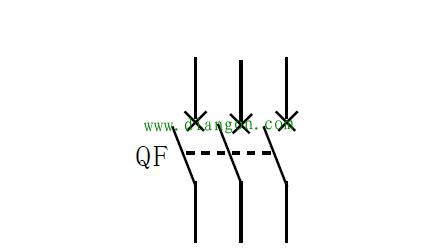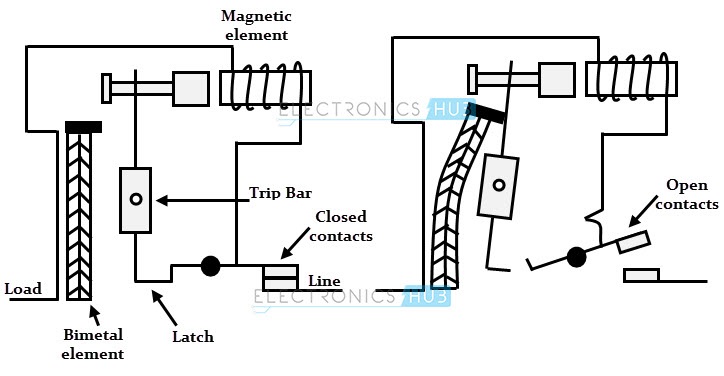Whether it is frame type circuit breaker, molded case circuit breaker or miniature circuit breaker, the structure of the circuit breaker body is basically the same, the difference is the size and the shape of parts.
Whatever type of circuit breakers, they must have three components in structure.
(1) Contacts and arc extinguishing systems, components that perform on-off circuits
(2) Free tripping and operating mechanism and intermediate transfer parts connecting the above two components.
(3) All kinds of trippers are used to monitor circuit faults and make protective actions, such as electromagnetic (over-current) trippers, thermal trippers, excitation trippers, Voltage-loss (under-voltage) trippers, etc.
(b) Graphic symbols for circuit breakers


Figure 2 is the schematic diagram and graphical symbols of the circuit breaker. Circuit breaker switches are closed manually or electrically by operating mechanism. After the contacts are closed, the free release mechanism locks the contacts in the closing position. When the circuit breaks down, the free tripping mechanism can be operated by the trippers, and the protection function can be realized automatically by tripping.
(1) Electromagnetic (over-current) tripper is used for short-circuit and over-current protection of line. When the current of line is greater than the set current value, the electromagnetic force produced by the over-current tripper causes the hook to trip off, and the movable contacts to disconnect rapidly under the tension of spring, thus realizing the tripping function of circuit breaker.
(2) The thermal tripper is used for line overload protection. Its working principle is the same as that of thermal relay. Both of them adopt the bimetallic sheet principle.
(3) Distribution tripper is used for remote/external tripping. When there is a tripping signal in the remote/external, the electric power of the shunt tripper generates electromagnetic force to make it tripping.
(4) Voltage-loss (under-voltage) tripper is used for Voltage-loss protection. As shown in Figure 2, the coil of the Voltage-loss tripper is directly connected to the power supply, in the suction state, and the circuit breaker can close normally. When the power is cut off or the voltage is very low, the suction of the Voltage-loss tripper is less than the reaction of the spring, and the spring makes the moving core upward to release the hook, thus realizing the tripping function of the circuit breaker. The protection configurations of different circuit breakers are different, so they should be selected according to their needs. The protection method can also be marked in graphic symbols.



